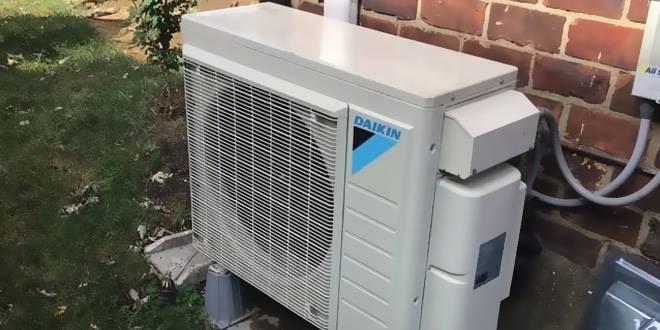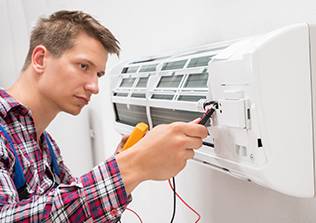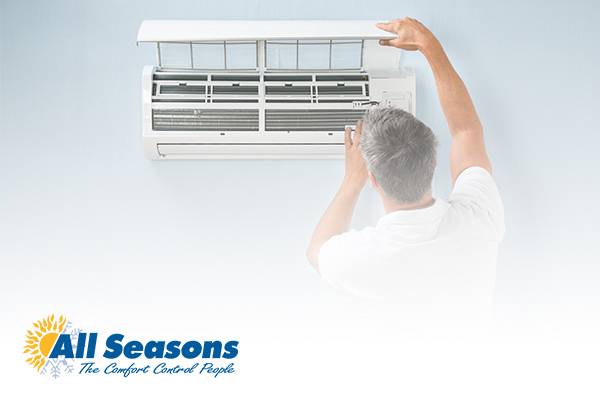
Join us as we explore the essence of HVAC mini-split systems, their operational mechanics, and the myriad benefits they bring. With over five decades of experience in the HVAC industry, we are committed to helping you navigate the complexities of modern heating and cooling solutions, ensuring that your journey toward achieving the perfect home environment is both successful and satisfying.
Understanding HVAC Mini-Splits 💡🏠❄️

HVAC mini-splits, a revolutionary component of modern home comfort systems, are designed to offer an efficient and flexible solution for heating and cooling needs. At their core, mini-split systems consist of two main components: an outdoor unit, which houses the compressor and condenser, and one or more indoor units that deliver air into the home. These components are connected by a conduit, which carries power, refrigerant, and a condensate drain line, eliminating the need for bulky ductwork.
Key Components and How They Work Together
- Outdoor Unit: The outdoor unit is installed outside the home and contains the compressor, condenser coil, and expansion coil or capillary tubing. Its primary function is to release heat during the cooling cycle and absorb heat during the heating cycle.
- Indoor Unit: Mounted on the wall, ceiling, or floor, the indoor unit consists of an air filter, cooling coil, and fan. It’s responsible for distributing conditioned air directly into the living space.
- Conduit: Connecting the outdoor and indoor units, the conduit requires only a small hole through the wall, minimizing the disruption to your home’s structure and aesthetics.
Distinguishing Features from Traditional HVAC Systems
Unlike traditional HVAC systems that rely on a network of ducts to distribute air, mini-splits offer a ductless solution, reducing the energy loss associated with ductwork. This design allows for a more controlled environment where each room or zone can be heated or cooled independently, enhancing comfort and reducing unnecessary energy consumption.
The Versatility of Mini-Splits
Mini-split systems are incredibly versatile, making them suitable for various applications. They can be used in homes without existing ductwork, in home additions where extending ductwork is impractical, or in specific areas of a home that require additional climate control. Their compact size and flexibility in installation allow them to fit seamlessly into nearly any space, from historic homes to modern apartments.
Advantages Over Window Units and Portable Air Conditioners
While window units and portable air conditioners provide a temporary cooling solution, they often fall short in efficiency, aesthetic appeal, and the ability to provide both heating and cooling. Mini-splits, on the other hand, offer a permanent, more energy-efficient solution without obstructing windows or requiring extensive installation work.
5 Benefits of Installing an HVAC Mini-Split 💼5️⃣💰

The adoption of HVAC mini-split systems in homes and businesses has been on the rise, driven by their numerous benefits ranging from improved energy efficiency to enhanced indoor comfort. These systems not only cater to the specific needs of different indoor environments but also offer long-term savings and convenience. Below, we explore the key advantages of installing an HVAC mini-split system.
1. Energy Efficiency and Cost Savings
One of the most compelling benefits of HVAC mini-splits is their energy efficiency. Traditional ducted systems can lose up to 30% of energy due to heat exchange in the ductwork. Since mini-splits are ductless, they significantly reduce this loss, translating to lower energy consumption and, consequently, reduced utility bills. The zoned heating and cooling capability allows for precise temperature control in occupied spaces, avoiding the waste of energy in unoccupied rooms.
2. Zoning Capabilities for Customized Comfort
Mini-splits excel in providing personalized comfort through zoning. Each indoor unit operates independently, allowing for different temperature settings in each room or zone. This is particularly beneficial in households with varying comfort preferences and ensures that each space is conditioned based on its specific use and occupancy patterns.
3. Flexibility in Installation
The compact size and flexibility of mini-split systems make them ideal for various settings, including homes without existing ductwork, new additions, and spaces where conventional HVAC systems are impractical. The indoor mini-split units can be wall-mounted, ceiling-recessed, or floor-standing, offering versatile options that can blend with any interior design without the invasive installation process required for traditional ducted systems.
4. Improved Indoor Air Quality
Mini-split systems are equipped with multi-stage filtration features that significantly reduce dust, bacteria, pollen, allergens, and other particulates in the air. This is a crucial benefit for individuals with allergies or respiratory conditions. Since there are no ducts to collect and distribute dust and allergens, the air delivered into your space is cleaner and healthier.
5. Quiet Operation
Another notable advantage of mini-split systems is their quiet operation. Traditional HVAC systems can be noisy, particularly when the air handler kicks in. Mini-splits, however, are designed for quiet performance, with the noisiest components located in the outdoor unit. The indoor units operate at a whisper-quiet level, ensuring a peaceful indoor environment.
Considerations Before Installing an HVAC Mini-Split 🤔🔍🛠️
Installing an HVAC mini-split system is a significant step towards achieving efficient and flexible home comfort. However, several critical factors must be considered to ensure the cooling system meets your specific needs and provides the best possible performance. Here, we outline important considerations to guide you through the decision-making process.
Assessing Your Space Requirements
Before installation, a thorough assessment of your space is crucial. The size and layout of the area to be conditioned significantly influence the type and size of the mini-split system required. An oversized or undersized unit can lead to inefficiency, increased energy costs, and uneven temperature control. Consulting with HVAC professionals ensures your system is perfectly tailored to your space, providing optimal comfort and efficiency.
Understanding the Installation Process
Installing a mini-split system, while less invasive than traditional air conditioning systems, requires careful planning and consideration. The location of the indoor and outdoor units affects the system’s performance and aesthetic impact on your home. Indoor units should be placed away from direct sunlight and sources of dust and debris, while outdoor units require adequate clearance and protection from the elements. Professional installers can offer valuable insights into the best placement for these components, ensuring efficient operation and integration into your home’s design.
Evaluating the Cost and Financing Options
While mini-split systems are cost-effective in the long run due to their energy efficiency, the initial installation cost can be higher than traditional systems, especially when multiple indoor units are required for zoning. It’s important to view this as an investment in your home’s comfort and energy savings. We partner with Synchrony Financial and Greensky to offer flexible financing options, making it easier to manage the upfront costs while benefiting from long-term savings and comfort.
Choosing the Right Model and Features
Mini-split systems come in various models, each with unique features designed to meet different needs. Features such as inverter technology, which allows the system to adjust its output to match the demand precisely, can further enhance efficiency and comfort. Additionally, smart features like remote control and programmable settings offer convenience and control over your home’s climate. We can help you navigate these options to find a system that aligns with your preferences and lifestyle.
Preparing for Maintenance and Long-Term Care
Regular maintenance ensures your ductless mini-split system operates efficiently and lasts for many years. Understanding the maintenance requirements, such as cleaning filters and scheduling professional check-ups, is essential. We provide comprehensive maintenance services to keep your air conditioner in top condition, offering peace of mind and preventing unexpected issues.
Maintenance Tips for Your HVAC Mini-Split 🛠️💡

Regular maintenance is crucial to ensure the longevity and efficiency of your HVAC mini-split system. By adhering to a consistent care routine, you can enjoy uninterrupted comfort, prevent potential issues, and even extend the life of your system. Here are essential maintenance tips to keep your mini-split operating at its best.
Regular Cleaning of Air Filters
One of the simplest yet most effective maintenance tasks is regularly cleaning the air filters in the indoor units. Dust and debris can accumulate over time, reducing air quality and system efficiency. Most mini-split air filters are reusable and can be easily cleaned with a vacuum or mild soap and water. We recommend cleaning the filters monthly, especially during high-use seasons, to ensure optimal airflow and indoor air quality.
Keeping the Outdoor Unit Clear
The outdoor unit of your mini-split system plays a crucial role in the heat exchange process. To maintain its efficiency, ensure that the area around the unit is clear of leaves, dirt, and debris. Additionally, remove any snow or ice accumulation that might obstruct the unit’s airflow during winter. A clear space allows for proper ventilation and heat dissipation, preventing overheating and potential system damage.
Checking for Leaks and Obstructions
Regularly inspect the conduit connections between the indoor and outdoor units for signs of leaks, cracks, or wear. Refrigerant leaks can significantly affect the performance of your mini-split system, leading to increased energy consumption and reduced cooling or heating capacity. If you notice any signs of damage or suspect a refrigerant leak, it’s important to contact us for professional repair services.
Scheduling Professional Maintenance
While homeowners can perform many maintenance tasks, some aspects of mini-split care require professional expertise. Annual or semi-annual check-ups by a qualified technician can uncover potential issues before they become major problems. Our team can perform comprehensive inspections, including checking refrigerant levels, testing electrical connections, and cleaning coils and condensate lines to ensure your system operates efficiently.
Being Mindful of System Usage
How you use your mini-split system can also impact its maintenance needs and lifespan. Features like programmable thermostats or eco-modes can optimize system performance and reduce wear and tear. Additionally, being mindful of keeping doors and windows closed when your system is operating can enhance efficiency and prevent unnecessary strain on the unit.
Secure Your Comfort with All Seasons Air Conditioning
Ready to elevate your home comfort? Choose All Seasons Air Conditioning for your HVAC mini-split needs! 🌡️✨ Experience unmatched efficiency and personalized climate control. Schedule your consultation today and take the first step towards a smarter, more comfortable living space. Your ultimate comfort journey begins here! 🏡💼

